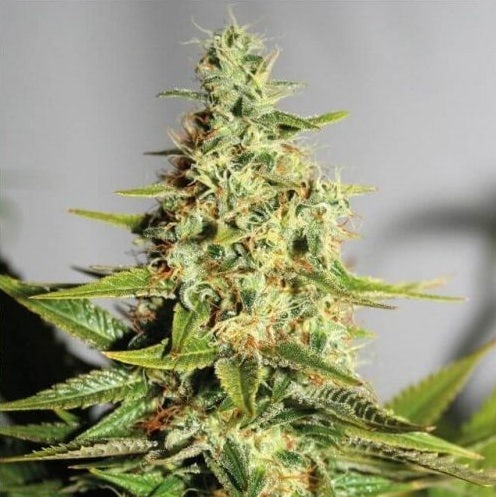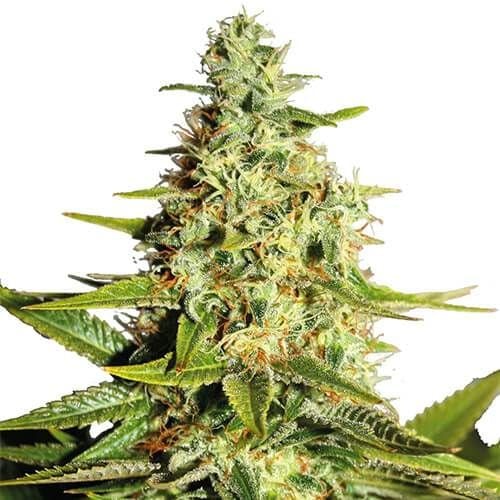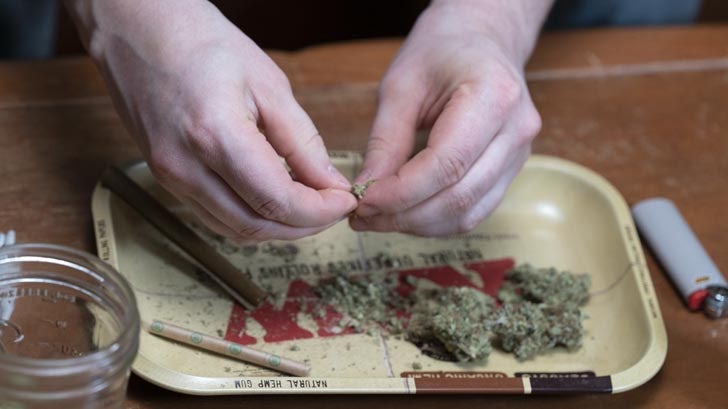Without landraces, we wouldn’t have weed. That may sound overdramatic, but it’s true!
Cannabis landraces are the original strains from which everything else descended. Since landrace strains have a long history, they offer one-of-a-kind cultivation and smoking experiences. Indeed, for many cannabis fans, growing landrace seeds at home is a profound and memorable event.
However, you need to know how landraces differ from hybrids before planting your first batch of seeds.
What are landrace strains?
Landrace strains can be considered “wild weed,” since they grew with minimal human intervention. The general idea is that these strains have adapted to the unique environment where they are found growing in the wild. In reality, there have been a few helping hands along the way, but landraces seeds are closer to “weed’s roots” than current hybrids. 1 2
Also, unlike the cannabis hybrids of today, landrace strains are usually considered either a pure indica or sativa. If the landrace evolved in hot and humid climates like Southeast Asia, they should be 100% sativas. By contrast, strains that grew in the mountains of Iran, Pakistan, or Afghanistan will be full indicas. Since landrace strains are named after their region of origin, it makes it a bit easier to predict their general effects and growing patterns. 3
Top landrace seeds every cultivator should know

-
 Seed type: feminized
Seed type: feminized
-
 Plant height: 7 - 10 feet
Plant height: 7 - 10 feet
-
 Time to flowering: 8 - 10 weeks
Time to flowering: 8 - 10 weeks

-
 Seed type: feminized
Seed type: feminized
-
 Plant height: 4 - 5 feet
Plant height: 4 - 5 feet
-
 Time to flowering: 7 - 8 weeks
Time to flowering: 7 - 8 weeks

-
 Seed type: feminized
Seed type: feminized
-
 Plant height: 7 - 9 feet
Plant height: 7 - 9 feet
-
 Time to flowering: 10 - 11 weeks
Time to flowering: 10 - 11 weeks

-
 Seed type: feminized
Seed type: feminized
-
 Plant height: 4 - 6 feet
Plant height: 4 - 6 feet
-
 Time to flowering: 10 - 11 weeks
Time to flowering: 10 - 11 weeks

-
 Seed type: feminized
Seed type: feminized
-
 Plant height: 2 - 4 feet
Plant height: 2 - 4 feet
-
 Time to flowering: 7 - 8 weeks
Time to flowering: 7 - 8 weeks
Here’s a closer look at the best landrace seeds you can buy:
Durban Poison

- Autoflower: no
- Seed type: feminized
- THC: 17.8%
- CBD: 0.9%
- Plant height: 7 – 10 feet
- Time to flowering: 8 – 10 weeks
- Terpene profile: myrcene, terpinolene, and limonene
Durban Poison may not be the “purest” landrace strain, but it’s unquestionably the most famous cannabis strain from Africa. For those who aren’t up on their geography, the first part of this strain’s name refers to a populous South African coastal city.
As the story goes, American cannabis enthusiast Ed Rosenthal preserved and refined rare African landraces that eventually became the licorice-scented Durban Poison. Since it came out in the 1970s, Durban Poison routinely ranks as one of the most significant sativa strains.
Indeed, since Durban Poison evolved in sunny regions, you should expect a no-holds-barred head-rush high. Also, home-growers should remember this earthy strain could soar well over seven feet. Be sure you have the proper training techniques in place to manage Durban Poison’s size.
Hindu Kush

- Autoflower: no
- Seed type: feminized
- THC: 17.1%
- CBD: 0.5%
- Plant height: 4 – 5 feet
- Time to flowering: 7 – 8 weeks Terpene profile: myrcene, beta-caryophyllene, and humulene
Hindu Kush is Mother Nature’s “OG Kush.” This spicy indica developed over centuries in its namesake mountain range. Since this strain didn’t have as much access to heat or humidity, it tends to have a quick flowering schedule and a short structure.
The flavors and effects of Hindu Kush are, well, classic Kush! Users frequently report aromas such as earth, hash, and spice as they first experience this long-hailed landrace. Since Hindu Kush is a 100% indica, you could also expect deeply relaxing effects.
Thai

- Autoflower: no
- Seed type: feminized
- THC: 20%
- CBD: ≤ 1%
- Plant height: 7 – 9 feet
- Time to flowering: 10 – 11 weeks
- Terpene Profile: limonene, alpha-pinene, and beta-caryophyllene
The Thai landrace is as exhilarating as a trip to brightly-lit Bangkok. Although this strain has been around since the days of Siam, it has all of the lemony, diesel aromatics you’d associate with modern Thai traffic. Also, since this strain is a full-bred sativa, it gives off tremendously stimulating effects that are perfect for early in the day.
Like other sativa landraces, Thai takes a long time to grow, and it often reaches heights of over seven feet. Cultivators need to recreate Thailand’s tropical temps and practice training techniques like LST to manage this temperamental strain.
Any fans of Haze hybrids could experience the origin of this weed family with Thai seeds.
Acapulco Gold

- Autoflower: no
- Seed type: feminized
- THC: 13.7%
- CBD: 0.1%
- Plant height: 4 – 6 feet
- Time to flowering: 10 – 11 weeks
- Terpene profile: limonene, pinene, humulene, myrcene
For many cannabis fans, Acapulco Gold is considered an expensive delicacy that people should enjoy over a long session.
Nobody’s sure how this Mexican landrace developed, but it gained a ton of attention in Western nations during the 1960s. Even today, Acapulco Gold flowers are highly sought after for their unique amber hue, sativa effects, and rich caramel aromatics.
Since Acapulco Gold is such an exclusive landrace, there isn’t much info on best-growing practices. However, cultivators with a pack of Acapulco Gold seeds should treat it as a standard indica landrace.
Afghani

- Autoflower: no
- Seed type: feminized
- THC: 17%
- CBD: 1%
- Plant height: 2 – 4 feet
- Time to flowering: 7 – 8 weeks Terpene profile: myrcene, alpha-pinene, and beta-caryophyllene
Along with Hindu Kush, Afghani is one of the most revered indica landrace strains. Unsurprisingly, this earthy cultivar hails from the mountain ranges of Afghanistan. Tokers who want a hash-like after-dinner smoke won’t complain about Afghani nugs.
Anyone familiar with growing and smoking Kush strains will quickly adjust to Afghani seeds. Due to its indica genetics, Afghani rarely grows above four feet and only takes about eight weeks to reach full flowering. Users often report strong sedative effects and a spicy, earthy flavor while smoking well-cured Afghani nugs.
While Afghani’s THC percentage isn’t as high as later Kush hybrids, it can still deliver a satisfying & soothing smoke.
What are the most potent landrace strains?
By now, you’ve probably heard a few tokers claim that today’s weed isn’t as tame as back in the 1960s. The primary reason for this has to do with advancements in breeding and cultivation techniques.
While feminized landraces have respectable levels of THC, they’re nowhere near as potent as cannabis hybrids being grown today. Indeed, 20th-century cultivators tinkered with landrace genetics primarily to extract more THC and create a plant more conducive to growing and selling on the illicit market. 4
For this reason, you’ll find most pure landraces have average THC at or below the teens while many hybrids have above 20% THC. Since landrace strains weren’t bred in controlled settings, they may not have the traits you’re used to in iconic hybrids. 5
Still, that doesn’t mean a few landrace strains can’t hit users hard. For those interested in the hardest-hitting effects, it’s best to look into full-bred sativa landraces such as:
Alternatively, you could go for an indica landrace strain, such as:
- Hindu Kush
- Aghani
Are autoflowering strains landraces?
For most of weed’s history, most cultivators only concerned themselves with traditional photoperiod sesitivelandraces. However, another landrace variety has gained mainstream attention in recent months. We’re talking about the Cannabis ruderalis family.
You may be unfamiliar with the term “ruderalis,” but you’ve probably seen a few “autoflowering” strains pop up in seed shops. The reason these seeds mature without a change in light schedule has to do with their ruderalis genetics and the environment this cannabis plant grew accustomed to.
Cannabis ruderalis landraces developed in less-hospitable climates like Northern China, Mongolia, or Siberia. Due to the intense cold and erratic light patterns, these landraces evolved to grow and flower faster (in about eight weeks). And unlike the typical photoperiod sensitive cannabis plants, ruderalis does not depend as heavily on the sun to trigger normal flower maturation.
Nobody grows pure ruderalis strains because they produce very few cannabinoids and terpenes. Instead, breeders cross ruderalis genetics with their favorites indicas, sativas, or hybrids. The result of this mix is a faster-flowering (but less intense) auto strain.
Why grow landrace seeds?
Many cannabis fans love romanticizing landrace strains, but the truth is these strains often aren’t the most practical. Since true landraces grew with minimal human intervention and are adapted to a specific climate, they tend to be more demanding than hybrid strains. Also, there’s a chance that landrace seeds will produce less potent weed or smaller yields overall than hybrid rivals. 6
However, this doesn’t mean landraces don’t have a place in cannabis cultivation. These landrace strains are often more robust, pest resistant plants, having desirable characteristics like pest or mold resistance.
Indeed, many modern-day breeders still use landraces as a template for experimenting with new strain combinations and strengthening genetic lines. Also, many pot purists are passionate about preserving landrace genetics to ensure the future diversity of cannabis. 7
Anyone interested in growing cannabis landraces at home should start with indica strains like Hindu Kush or Afghani. Due to their history in more rugged terrain, these landraces are more forgiving in indoor set-ups. Plus, indica landraces take less time to flower and don’t grow as tall.
As you gain more experience with sativa hybrids, you could consider moving to 100% sativa landraces. Just keep in mind strains like Durban Poison and Thai grow incredibly tall, take longer to reach flowering.
Lastly, always double-check your landrace seeds are coming from a reputable cannabis vendor. To increase the odds you’re getting a 100% landrace genotype, you need to buy from a company with a “high” reputation.
Sources
- McPartland, J. M., & Small, E. (2020). A classification of endangered high-THC cannabis (Cannabis sativa subsp. indica) domesticates and their wild relatives. PhytoKeys, 144, 81–112. https://doi.org/10.3897/phytokeys.144.46700
- Cannabis Domestication, Breeding History, Present-day Genetic Diversity, and Future Prospects, 2016, Critical Reviews in Plant Sciences 35(5-6):293-327, DOI:10.1080/07352689.2016.1267498
- McPartland JM, Small E. A classification of endangered high-THC cannabis (Cannabis sativa subsp. indica) domesticates and their wild relatives. PhytoKeys. 2020;144:81-112. Published 2020 Apr 3. doi:10.3897/phytokeys.144.46700
- Stuyt E. (2018). The Problem with the Current High Potency THC Marijuana from the Perspective of an Addiction Psychiatrist. Missouri medicine, 115(6), 482–486.
- ElSohly, M. A., Mehmedic, Z., Foster, S., Gon, C., Chandra, S., & Church, J. C. (2016). Changes in Cannabis Potency Over the Last 2 Decades (1995-2014): Analysis of Current Data in the United States. Biological psychiatry, 79(7), 613–619. https://doi.org/10.1016/j.biopsych.2016.01.004
- Tipparat P, Natakankitkul S, Chamnivikaipong P, Chutiwat S. Characteristics of cannabinoids composition of Cannabis plants grown in Northern Thailand and its forensic application. Forensic Sci Int. 2012;215(1-3):164-170. doi:10.1016/j.forsciint.2011.05.006
- Elie Dolgin, Inner Workings: Genomics blazes a trail to improved cannabis cultivation, Proceedings of the National Academy of Sciences Apr 2019, 116 (18) 8638-8640; doi: 10.1073/pnas.1904094116
Sign up for bi-weekly updates, packed full of cannabis education, recipes, and tips. Your inbox will love it.

 Shop
Shop Support
Support
















